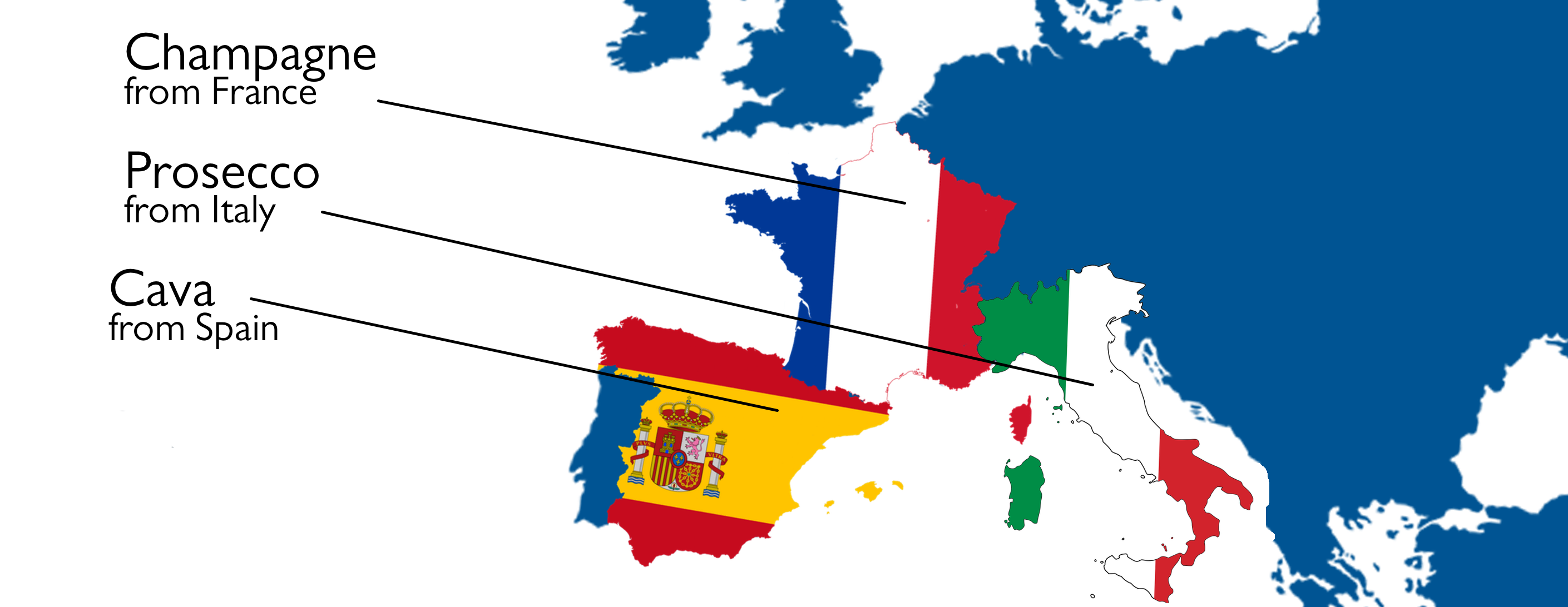Ask a sommelier what their favorite type of wine is and they’ll likely respond with “bubbles!” Sparkling wines are not only refreshing and delicious, but they can turn an everyday situation into a celebration. Fortunately for us, sparkling wines are available at every price range, and a bottle that suits your tastes and needs is easy to find at almost any wine shop. Most sparklings wines will fall into one of three categories: Champagne, Prosecco, and Cava.
Champagne:
The pinnacle of the sparkling wine experience is, of course, Champagne. What makes Champagne so special? Both the location and production set Champagne apart from other sparkling wines. First, the grapes for this wine (only pinot noir, chardonnay, and pinot meunier can be used for Champagne) are grown in the cold-weathered, chalky-soiled Champagne region of France that gives the wine its signature zesty acidity and mineral flavors. Secondly, the production process for Champagne is unique in the world. While there are many ways to put the bubbles in the bottle, the original and most time-consuming way is to add wine and sugar to still, non-sparkling, wine and put it in a bottle. Then, the bottle is corked and put it in a cellar until sugar to start a secondary fermentation. A bi-product of that fermentation is thousands of delicate bubbles of carbon dioxide. During this process, Champagne bottles are aged from 15 months to 9 years. Champagne bubbles should be tiny and plentiful, giving the wine a near creamy mouthfeel. A bottle of Champagne from about $35 to well over $300.
Prosecco:
Prosecco is one of my favorite inexpensive sparklers available on the market. Prosecco comes from Italy and is grown in a region just north of Venice. The main qualities of Prosecco are friendly and easy-drinking. The bubbles in Prosecco are much less persistent than the ones in Champagne- this is due to the way in which the bubbles are formed. The secondary fermentation (bubble makin’ time) occurs in a steel tank, with the wine then being bottled under continuous pressure. With lots of peach, meyer lemon, and maybe a little creamy vanilla the flavors of this wine are sure to please. Prices for Prosecco are in the $15 range.
Cava:
Cava comes to us from Northern Spain near Catalonia. The bubbles from Cava are achieved in the same method as Champagne, giving the wine a wonderful texture. Another similarity to Champagne is that some of the best Cavas use a significant portion of Chardonnay- one of the three grapes allowed in Champagne. The significant difference between Cava and Champagne? Following new technology. The Spanish have fully embraced new technologies that allow them to mechanize the secondary fermentation process and keep the prices down. With flavors of apple, pear, and bright citrus this wine is an amazing bang for your buck. Cava runs from $10 to $20.
So which sparkling is right for your big day? Even within these categories, the variances from producer to producer can be distinctive. Speaking with your favorite beverage professional is the best way to make sure the perfect celebration beverage is invited to the ceremony. Click here to learn more about all the wedding services we offer.


